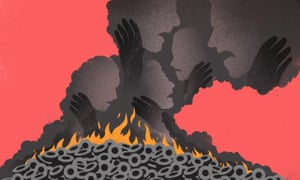Consider how effective the interventionist policies of import substitution and export-led industrialisation are likely to be in raising the levels of economic growth and development in LEDCs.
Import substitution and export-led industrialization are two interventionist policies that countries can adopt to promote economic growth and development. Let's consider how effective these policies are likely to be in raising the levels of economic growth and development in LEDCs (Less Economically Developed Countries).
- Import Substitution: Import substitution is a policy strategy where a country aims to reduce its dependence on imported goods by promoting domestic production of those goods. The idea is to protect domestic industries from foreign competition and foster self-sufficiency. LEDCs adopting import substitution policies typically impose high tariffs and trade barriers on imported goods, making them more expensive and less competitive compared to domestically produced goods.
The infant industry argument comes into play in import substitution policies. According to this argument, emerging industries in LEDCs may initially face disadvantages compared to established industries in developed countries. They may lack economies of scale, experience higher production costs, and face technological and managerial challenges. To overcome these obstacles and enable the growth of these industries, protectionist measures are implemented.
However, import substitution policies have shown mixed results in raising economic growth and development. While they may initially protect domestic industries and promote industrialization, there are several drawbacks:
a) Lack of competitiveness: Import substitution policies often lead to the development of industries that are not internationally competitive. Due to limited exposure to global competition, these industries may struggle to innovate, achieve economies of scale, and produce high-quality goods at competitive prices.
b) Limited market size: LEDCs generally have smaller domestic markets compared to developed countries. Relying solely on domestic demand can limit the growth potential of industries. Without access to international markets, firms may face challenges in achieving economies of scale and attracting investment.
c) Dependency on inefficient industries: Import substitution policies may lead to the development of industries that are protected from competition but are inefficient and less productive. This can result in a misallocation of resources and hinder overall economic growth.
Example: During the mid-20th century, many LEDCs, including India and some Latin American countries, implemented import substitution policies. While they initially aimed to reduce dependency on imports and develop domestic industries, the results varied. Some industries thrived, but others became inefficient and uncompetitive. Over time, many countries shifted towards more market-oriented policies to promote economic growth.
- Export-Led Industrialization: Export-led industrialization is a policy approach where a country focuses on developing industries that can compete in international markets and promotes exports as a driver of economic growth. This strategy involves implementing policies such as export incentives, infrastructure development, investment in human capital, and market-oriented reforms to attract foreign investment and boost exports.
Export-led industrialization has been relatively more successful in promoting economic growth and development compared to import substitution policies. Some reasons include:
a) Access to larger markets: By focusing on exports, LEDCs can tap into larger international markets, allowing their industries to achieve economies of scale and expand production. Export-oriented industries are driven by international demand, which can provide sustained growth opportunities.
b) Technological spillovers: Engaging in global trade can expose LEDCs to advanced technologies and knowledge from developed countries. This transfer of technology can contribute to productivity improvements and innovation, benefiting the overall economy.
c) Foreign direct investment (FDI): Export-led industrialization policies often attract foreign investment, which brings in capital, technology, and managerial expertise. FDI can help boost industrialization, create employment opportunities, and enhance productivity in LEDCs.
Example: China and Japan are notable examples of countries that successfully implemented export-led industrialization policies. China, through its policy reforms and export-oriented approach, has become a global manufacturing powerhouse, exporting a wide range of goods to countries around the world. Japan also pursued export-led industrialization after World War II and transformed into a major exporter of automobiles, electronics, and machinery.
In conclusion, while both import substitution and export-led industrialization have been employed by LEDCs, export-led industrialization has generally proven more effective in raising economic growth and development. By focusing on exports, LEDCs can access larger markets, benefit from technological spillovers, and attract foreign investment. However, each country's specific circumstances and policy implementation play a crucial role in determining the success of these strategies. The infant industry argument provides a theoretical justification for protectionist measures under import substitution policies, acknowledging the initial disadvantages faced by emerging industries. However, striking a balance between protection and competitiveness is essential to avoid long-term inefficiencies and promote sustainable development.









